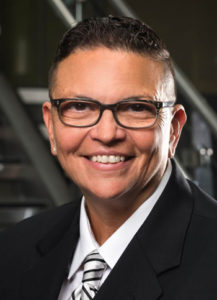Founded in 1985, Main Line Health (MLH, the System) is a not-for-profit health system serving portions of Philadelphia and its western suburbs. At its core are four of the region’s respected acute care hospitals – Lankenau Medical Center, Bryn Mawr Hospital, Paoli Hospital and Riddle Hospital. MLH also includes Bryn Mawr Rehab Hospital, Mirmont Treatment Center for drug and alcohol recovery, and MLH HomeCare & Hospice, a home health service. Additionally, MLH consists of Main Line HealthCare (MLHC), one of the region’s largest multispecialty physician practices; the Lankenau Institute for Medical Research, a non-profit biomedical research organization; and five outpatient health centers.
 Christine Torres
Christine Torres
System vice president, supply chain and biomedical engineering, Main Line Health, Radnor, Pennsylvania
Chris Torres began her healthcare career as a high-schooler, working in a research lab in a Philadelphia hospital. While still in college, she became certified as a surgical technician and scrubbed in the OR evenings and nights. After graduation, she joined The Wistar Institute, an independent biomedical research firm in Philadelphia, but soon returned to the clinical setting, scrubbing in the OR, primarily for orthopedics and neuro procedures. She assumed additional responsibilities in SPD, logistics and materials management before taking a hiatus from healthcare in 2000, when she joined IKON (now Ricoh), to oversee facilities management in Pennsylvania, New York and New Jersey. Although she learned some valuable lessons about business, she recognized that healthcare was her true calling. She returned to Main Line Health in November 2002. Today, Torres attributes her success to her business and academic acumen, clinical expertise, and ability to create strong relationships built upon trust and respect. These attributes allow her to provide Main Line Heath with vision, strategy and direction for navigating the difficult challenges hospitals face today.
As the system vice president of supply chain management and biomedical engineering, Torres oversees more than 250 employees in biomedical engineering, contracting, inventory control and logistics. The supply chain management team is responsible for approximately $300 million in spend. The program encompasses an in-house biomedical equipment management program, strategic sourcing, supply chain management technology and data analytics, clinical resource management aligned with clinician engagement, and systemized logistics management.
Journal of Healthcare Contracting: What has been the most challenging and/or rewarding supply-chain-related project in which you have been involved in the past 12-18 months?
Chris Torres: Over the past 12 months we have redesigned our value analysis/technology assessment program. The Clinical Resource Management program (CRM) is an important foundation for our performance excellence work. The program is guided by the Institute of Medicine STEEEP principles, and is a “systemized approach” to review new products, services and technology. (STEEEP is an acronym for six aims for healthcare: Safe, Timely, Effective, Efficient, Equitable, Patient-centered.) This platform serves to provide Main Line Health with tools and data to address the standardization of care and optimize patient outcomes. A key to success is our clinician engagement process. We have open communication with our clinicians, we are transparent with our cost data, and we share the responsibility of the “total value of care.”
JHC: Please describe a project on which you look forward to working in the next year.
Torres: We are embarking upon the difficult journey of “bending the Medicare cost curve.” We will look at variations in care, outcomes, and a more holistic approach to delivering high-quality care to our patients. Our hope is that this work will result in a sustainable model, which reduces variation in care, focuses on utilization and waste, and shows reduction in the total cost of care. Our guiding principles will be STEEEP. For example, we will ask if certain patients need X-rays every eight hours, when perhaps once every 24 hours would be safe and effective, in accordance with evidence-based medicine practices. In the supply arena, we will work with our clinicians to determine if we really need 15 shoulder anchors, when perhaps four would deliver the same results.
JHC: In what way(s) have you improved the way you approach your job or profession in the last 5-10 years?
Torres: Over the past five to seven years I have focused on building a team of “stars,” who are empowered to think outside the box, make decisions, feel confident that I will always have their back, and celebrate our successes. Supply chain management is hard work if you do it correctly. It’s not about chasing “price.” It’s about understanding the life cycle of the products, services and technologies we use; the total cost of ownership; measurable outcomes; engaging partners; and doing the right thing for patients.
JHC: What do you need/want to do to become a better supply chain executive in the coming year(s)?
Torres: Supply chain leaders need to become the utilization and waste management consultants for their organization. The supply spend for an organization is the second largest bucket of expense, and it needs to be managed in a proactive and thoughtful manner. Our patients should be the center of all discussions related to products, services and technology. Aligning our processes with the IOM STEEEP principles assures that we employ a standardized approach to supply chain management.
